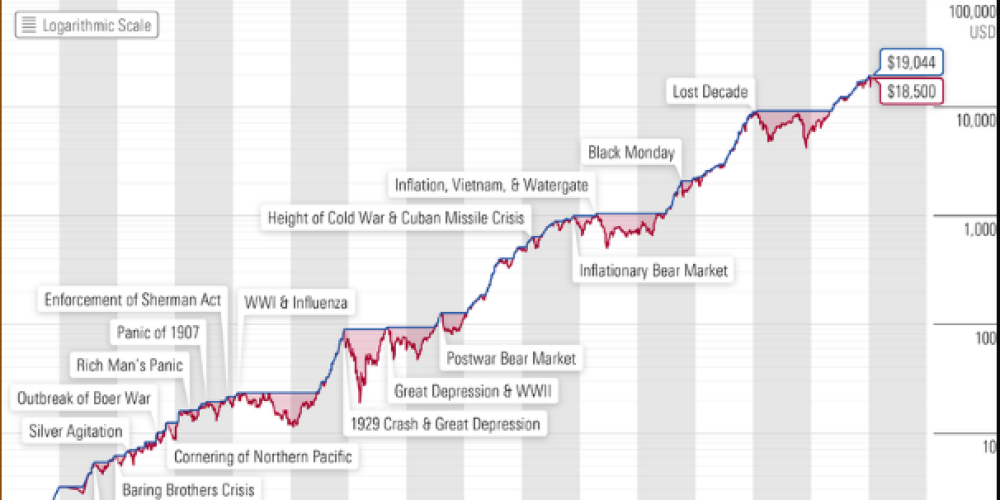
If you have only been involved in the U.S. stock market in recent years or the past 15 years, you might think that the U.S. stock market only goes up (even the significant drop in 2020 due to Covid was very brief). However, if we extend the time-frame, after every period of frenzy, the U.S. stock market has experienced a major decline of 40%-90%. While the U.S. stock market certainly holds long-term investment value, if you enter at the wrong time, there’s a significant chance of encountering a market crash, requiring a decade or longer to reach new highs. Here are some well-known examples of stock market crashes/asset bubble bursts:
Tulip Mania in the Netherlands (1636–1637):
Tulip Mania is one of the earliest recorded speculative bubbles, occurring in the 17th century in the Netherlands. Tulip bulbs became an extremely coveted commodity, with prices skyrocketing to astronomical levels. However, the market eventually collapsed, and bulb prices plummeted. The specific percentage of the decline is challenging to determine, but many investors suffered significant losses.
South Sea Bubble (1719–1720):
The South Sea Bubble occurred in the United Kingdom and had a significant impact on American investors. The South Sea Company gained a monopoly on trade with South America, leading to a surge in its stock price. However, the company’s assets and profits were inflated, and when the bubble burst, many investors suffered substantial losses. It fell approximately 98% from its peak.
Mississippi Bubble (1719–1720):
The Mississippi Bubble, also known as the Royal Bank Bubble, was another significant speculative bubble that occurred in France. It was driven by the promotion of the Scottish economist John Law, who founded the Mississippi Company and hyped the potential profits of France’s colonial ventures in North America. When the bubble burst, the company’s stock price plummeted significantly, estimated to have fallen by over 90%.
Railway Mania (1840s):
Railway Mania occurred in mid-19th century Britain. It was a period of intense speculation in railway company stocks, driven by the belief in the transformative power of railway transportation. However, excessive speculation led to a market collapse, and many railway companies went bankrupt. The extent of stock price declines varied, but some companies experienced drops of over 40%.
Great Depression in the United States (1929–1932):
The Wall Street stock market crash of 1929 is one of the most famous stock market crashes in history, marking the beginning of the Great Depression. Excessive speculation, overvaluation of stocks, and margin trading all contributed to the crash. The Dow Jones Industrial Average fell approximately 90% from its peak in 1929 to the trough in 1932.
Nifty Fifty Bubble (1960s-1970s):
The Nifty Fifty bubble refers to the period in the 1960s and 70s when investors enthusiastically purchased stocks of 50 large, high-quality American companies, considered “one-decision” stocks. These stocks were believed to be safe and reliable, leading to overvaluation. However, the bubble burst in the early 1970s, and many Nifty Fifty stocks experienced significant declines, ranging from 40% to 90%.
Oil Crisis and Stagflation Period (1972–1974):
The 1973 oil crisis was triggered by an oil embargo from the Organization of Arab Petroleum Exporting Countries (OAPEC), leading to a significant disruption in global oil supply and a sharp rise in oil prices. This event overlapped with a period of stagflation characterized by high inflation and economic stagnation. The combination of these factors had an adverse impact on global stock markets, with declines exceeding 40%.
Japanese Asset Price Bubble (1986–1991):
The Japanese asset price bubble was a speculative bubble that occurred in Japan in the late 1980s. It was driven by excessive lending, real estate speculation, and inflated asset prices. The bubble burst in the early 1990s, leading to a prolonged economic stagnation in Japan. The Nikkei 225 Index declined by approximately 80% from its peak in December 1989 to its trough in February 2003.
Dot-Com Bubble (1997–2000): The Dot-Com Bubble formed in the late 1990s, driven by the rapid growth of internet-related companies. Investors heavily invested in internet startups, often overlooking their profitability. Stock prices reached unprecedented levels, but the bubble burst in 2000, triggering a significant market correction. The NASDAQ Composite Index declined by approximately 78% from its peak in February 2000 to its trough in September 2002.
U.S. Subprime Mortgage Crisis (2008–2009):
The stock market crash of 2008 was one of the most severe financial crises since 1929, known as the Subprime Mortgage Crisis or Financial Tsunami. The crisis originated from issues in the U.S. subprime mortgage market and subsequently spread to the global financial system. Many financial institutions faced the risk of bankruptcy, and stock market indices experienced a sharp decline. The Dow Jones Industrial Average fell by approximately 54% from its peak in October 2007 to its trough in March 2009. This collapse caused significant damage to the global economy, triggering a worldwide financial and economic recession.
These significant stock market bubbles highlight the risks of excessive speculation and the consequences of market collapses. Investors should exercise caution and adopt prudent risk management strategies when faced with market over-exuberance. Drawing lessons from past bubbles can help guide investment decisions and reduce potential future losses. Currently, I see the most significant crisis in the U.S. stock market among various global markets. I will continue to analyze relevant content and share it in the Artificial Intelligence Wealth Club community group. I hope it brings substantial meaning to your investments.
Oznake
Izdvojeni tekstovi